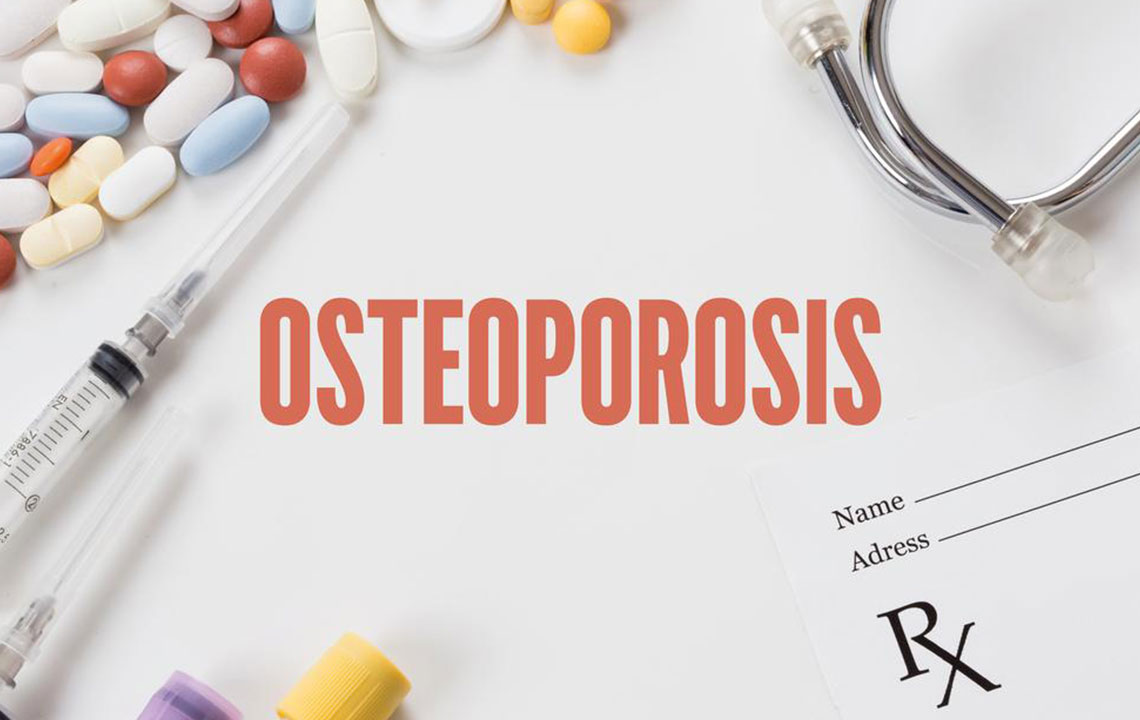Comprehensive Guide: Proven Strategies to Prevent and Reverse Osteoporosis Naturally
Discover over 1500 words of scientifically-supported strategies to prevent and reverse osteoporosis naturally. This comprehensive guide covers nutrition, lifestyle, hormonal health, sunlight exposure, exercise, and medical screening, providing practical tips to strengthen bones and reduce fracture risk. Learn how to protect your skeletal integrity effectively at any age with expert advice and evidence-based practices.

Comprehensive Guide: Proven Strategies to Prevent and Reverse Osteoporosis Naturally
Osteoporosis is a condition characterized by weakened bones, increasing the risk of fractures and severe health complications. Preventing and effectively managing osteoporosis is crucial for maintaining mobility, independence, and quality of life, especially as one ages. This in-depth guide explores scientifically backed strategies that can help you prevent the onset of osteoporosis or even reverse its progression through natural means. Whether you're looking to safeguard your bone health or improve existing conditions, these comprehensive tips will provide you with valuable insights and practical advice.
Bone health is a complex interplay of nutrition, lifestyle, hormonal balance, and environmental factors. Addressing these aspects holistically can significantly impact your skeletal strength and resilience. Let’s delve into each critical strategy in detail, supported by recent scientific findings and expert recommendations, ensuring you have all the necessary information to make informed decisions about your bone health.
1. Embrace a Bone-Friendly Diet Rich in Essential Nutrients
A balanced diet forms the foundation of strong bones. Key nutrients such as calcium, vitamin D, magnesium, and vitamin K play vital roles in maintaining bone density and strength. Ensuring adequate intake of these nutrients can help prevent bone loss and support natural repair processes.
Calcium: The primary mineral in bones, calcium is essential for maintaining bone mass. Dietary sources include dairy products like milk, cheese, and yogurt, as well as leafy green vegetables such as kale and collards, almonds, sesame seeds, and fortified foods. To maximize absorption, pair calcium-rich foods with vitamin D sources.
Vitamin D: Facilitates calcium absorption in the gut. Sunlight exposure helps your body synthesize vitamin D naturally. Additionally, include fatty fish like salmon, mackerel, and sardines, or consider supplements if necessary.
Magnesium & Vitamin K: Magnesium supports bone mineralization, while vitamin K helps activate osteocalcin, a protein that binds calcium in bones. Foods like nuts, seeds, broccoli, and fermented foods are excellent sources.
It’s also essential to limit intake of foods that hinder calcium absorption or promote bone loss, such as excessive alcohol, refined sugars, and processed foods.
2. Minimize Consuming Harmful Beverages and Substances
Numerous beverages and substances can negatively impact bone health. Understanding how these elements affect your bones can help you make smarter choices.
Avoid Carbonated Drinks: Fizzy drinks, especially colas and some sparkling waters, contain phosphates that can leach calcium from bones, weakening their structure. Additionally, excessive consumption may interfere with calcium absorption.
Limit Caffeine Intake: One cup of coffee can cause about 150 mg of calcium to be excreted through urine. While moderate caffeine consumption is generally safe, high intake can contribute to bone loss if not balanced with sufficient calcium intake. Opt for decaffeinated beverages or herbal teas when possible.
Refrain from Excessive Alcohol: Chronic alcohol consumption impairs calcium absorption and disrupts the balance of hormones needed for bone remodeling.
3. Strategic Use of Medications and Supplements
Supplements can help bridge nutritional gaps, but their use should be informed and appropriate.
Calcium Supplements: Select well-absorbed options such as calcium citrate rather than calcium carbonate like Tums, which can be poorly absorbed and impair stomach acid production. Note that the body can absorb up to 500 mg of calcium at a time, so distribute your calcium intake throughout the day for optimal utilization.
Vitamin D Supplements: May be necessary if sunlight exposure is limited, especially in higher latitudes or during winter months. Adequate vitamin D levels are crucial for calcium absorption and bone mineralization.
Always consult your healthcare provider before starting any new supplement regimen to tailor it to your specific health needs.
4. Harness the Power of Sunlight and Vitamin D
Vitamin D is a critical nutrient for bone health. Its primary role is to enhance calcium absorption from the gastrointestinal tract and facilitate its deposition into the bones. Adequate sunlight exposure helps your body produce vitamin D naturally.
Spend approximately 15–20 minutes outside in sunlight several times a week, exposing arms and legs without sunscreen. Adjust based on skin type and local ultraviolet index.
In areas with limited sun exposure, especially during winter, consider dietary sources or supplements to maintain optimal vitamin D levels, typically between 20-50 ng/mL.
5. Hormonal Balance and Regular Monitoring
Hormones play a significant role in regulating bone metabolism. Postmenopausal women and men experiencing hormonal changes are at increased risk of bone loss.
Monitor hormones such as estrogen, testosterone, cortisol, and parathyroid hormone regularly, especially if you have risk factors or existing health issues.
Address hormonal imbalances through lifestyle modifications or medical interventions under professional supervision.
6. Incorporate a Holistic, Anti-Inflammatory Diet
Reducing systemic inflammation can protect bones. Focus on diet quality by avoiding refined sugars and starches that promote inflammation. Instead, consume plenty of fiber-rich foods, omega-3 fatty acids from fish, and antioxidant-rich fruits and vegetables.
A diet low in processed foods and high in natural, nutrient-dense ingredients benefits overall health, including bone integrity.
7. Manage Stress and Cortisol Levels
Chronic stress elevates cortisol levels, which can accelerate bone loss by inhibiting osteoblast activity and promoting osteoclast activity.
Practice stress-reducing techniques such as meditation, yoga, or deep breathing exercises.
Ensure adequate sleep and balance work-life demands to keep stress in check.
8. Engage in Regular Weight-Bearing and Resistance Exercises
Physical activity stimulates bone formation and increases bone density. Weight-bearing exercises involve supporting your body weight against gravity, such as walking, jogging, or dancing. Resistance training with weights or resistance bands enhances muscle strength and stimulates bone growth.
Aim for at least 30 minutes of moderate activity most days of the week. Always consult with your healthcare provider before starting new exercise routines, especially if you have existing health conditions.
9. Avoid Smoking and Toxins
Smoking is a significant risk factor for osteoporosis as it impairs osteoblast function and reduces blood supply to bones. Similarly, exposure to environmental toxins can negatively impact bone health.
Cease smoking and minimize exposure to pollutants to promote healthier bones.
10. Regular Bone Density Screening and Medical Consultation
Early detection of osteoporosis or osteopenia allows for timely intervention. Bone density scans (DEXA tests) can evaluate your bone health status.
If diagnosed, work with your healthcare provider to develop a personalized treatment plan that may include lifestyle changes, medications, or supplements.
Protecting your bones requires a proactive and comprehensive approach. Integrating nutritious eating, lifestyle modifications, appropriate supplementation, and regular medical monitoring can significantly reduce your risk of osteoporosis and help maintain strong, healthy bones throughout life.





